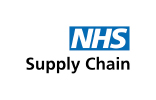May 28, 2019 Guest opinion piece
By introducing GS1 standards in an industry that is ready for change, we can meet our regulatory requirements and unlock the digital potential in the healthcare supply chain.
The compliance deadlines for the EU Medical Devices Regulations are rapidly approaching. The need to be able to trace devices and information throughout the value chain is driving all of us to review our supply chains and handshake points with our partners.
At the same time, the continuing focus from the secretary of state for health and social care on the digital transformation of the NHS, including the recent announcement of the new NHSX, cannot be ignored.
The momentum is building, and many of us in the industry are excited and optimistic about realising some of the long-talked-about benefits of technological advancement in the NHS.
It is long awaited and overdue, and there are those who have a more cynical or pragmatic response, a feeling of deja vu, and even a doubt that it will actually happen. The reality is that it won’t happen, or at least not to the extent it could, unless we all work together to proactively pursue the opportunities that are presenting themselves.
For some, these may need to be large transformational programmes, for others small incremental steps – but for all of us, there needs to be change.
Talking the same language
It’s easy for us all to think we have the right way, and others need to just ‘get it’ so we can all live in harmony. The truth is, despite what people say there is no right way when it comes to product data.
There is good practice around data quality and structure, but essentially whatever works for your needs and your operation is fine. Until, however, your organisation wants to work with others and share that data or use it to manage the movements within the end-to-end supply chain.
Translation exercises and cross-referencing drain time, resource, and energy, and take people away from delivering the core value you need. Different interpretations and understanding lead to flawed decision making.
To be agile and create competitive advantage from data, we must be talking the same language. We need information at our fingertips, but crucially it needs to be information we understand immediately.
NHS Supply Chain and GS1
Getting base data, such as product master data, understood and governed by a common standard is the first step in a series of building blocks to create clarity and visibility in our own organisations and those we interact with.
NHS Supply Chain have been working on a master data exchange pilot with the Department of Health and Social Care’s Scan4Safety programme. By using the Global Data Synchronisation Network (GSDN) and GS1 product master data standards, we have proved that the vast majority of what we need is already catered for, and that this approach provides a high-quality, standardised data source.
The “placeholders” for the data requirements we have, already exist in the GS1 standards, and for many of our suppliers, the data is being gathered and shared globally through the GDSN with our counterparts around the world.
GS1 has done, and continues to do, the work to set the standards, attribute definitions and framework that ensures these standards are interoperable globally.
The decision has been made to use the GS1 standards as the interoperable data standards for the healthcare industry in the UK, and work is continuing to leverage these standards at the coalface of patient care.
NHS Supply Chain will play our part in increasing consistency and clarity of data by adopting the GS1 standards and GDSN communication methodology, where possible, as part of our product data management processes, especially in those areas that support our regulatory and compliance data needs.
Adapt to make the most of it
I believe that although GS1 standards are not perfect, they could be universal. Once we accept and adopt the basics of this language, we can evolve and develop it over time to meet our needs.
However, it is not a silver bullet – it doesn’t slot seamlessly into our existing data models and we do need to make significant changes to allow us to make the most of this data source.
Our people and systems need to learn how to talk the GS1 language and make the most of the technology. Our partners, suppliers and customers need to do the same, so that we can together realise the value of this approach and move forward.
As is often the case this is not just about technology, more importantly, it’s about culture, people and mindset.
As a wise man once said to me: “Do something different, to make a difference.” At a time when the world seems increasingly fragmented and divided, the art of collaboration becomes more vital than ever before. By giving our teams a common data language, we can make that collaboration a little bit easier.
A mechanism for closing the gaps
There are, and will always be, those data elements that are new or unique to our market place and don’t exist in the GDSN standard. Recent examples include new requirements identified through EU Medical Device Regulations.
Equally, there will be new data needs as technology advances and adoption increases. To facilitate this ongoing evolution, there are established mechanisms and a global community of professionals who are ready to work together to make sure the standards meet our needs both now and in the future.
We need to get involved to make sure voices from the UK healthcare industry are heard.
A once in a generation opportunity
“Staff must have the opportunity to learn about digital technologies and develop the necessary skills…It’s a once-in-a-generation opportunity. To seize that opportunity and build a better, more sustainable health service for the future, we must ensure our NHS workforce have the right tech and the right tech skills.”
The Rt Hon Matt Hancock, secretary of state for health and social care, speaking at the Royal Society of Medicine, February 2019
What can we do now?
| 1 | Introduce GTINs and GLNs as identifiers of product and place |
| 2 | Take advantage of the training available through GS1 online – free to all members. |
| 3 | Understand our ‘real’ data needs and be open to different ways of meeting those needs. |
| 4 | Get involved – join the GS1 forums to influence the development of the standards. |
| 5 | Be prepared to contribute, compromise and collaborate. |
At its core, moving away from the manufacturer’s product code and towards Global Trade Item Number (GTIN) as the main identifier of products in the healthcare landscape is huge.
It’s a task that must not be underestimated and it must be done with due diligence and consideration of the impact on our existing technological landscapes. At NHS Supply Chain, we are on that journey. We are working hard to make GTINs and Global Location Numbers the primary identifiers in our systems but the real benefit of this shift is everyone joining in.
The power of the change is in the scale of the change. Without everyone involved pursuing the goal of a single standard we will fall short of meeting our potential.
About the author

Sarah’s background is in operational supply chain management and development, and currently works as a senior analyst for NHS Supply Chain. Most recently Sarah delivered a pilot for the Department of Health and Social Care’s Scan4Safety programme on the use of the Global Data Synchronisation Network for data sharing.
Prior to joining NHS Supply Chain, Sarah worked across the grocery retail landscape for a fast-moving consumer goods manufacturer, and also for a high-street retailer in their ‘e-commerce’ division. In doing so, she has experienced a world where data driven decision making and using the GS1 standards in the value chain are the norm and she has seen the efficiency and traceability opportunities this enables in the supply chain. Her passion is to drive forward and contribute to the realisation of those opportunities for our NHS.
About NHS Supply Chain

The Supply Chain Coordination Limited (SCCL) went live on 1 April 2018. It is the management function of the new NHS Supply Chain operating model, previously known as the Future Operating Model.
As the management function of the NHS Supply Chain operating model, the SCCL will deliver savings of £2.4 billion to be delivered by FY2022/23, by leveraging the collective buying power of the NHS to provide clinically assured products at the best value which meet the diverse needs of NHS organisations.
For more information please visit: www.supplychain.nhs.uk/sccl/